Facts on Paul Revere
This is a list of basic Facts on Paul Revere. Paul Revere became a nationally celebrated folk hero as a result of Henry Wadsworth Longfellow's poem Paul Revere's Ride. Paul Revere's ride is one of the events of the Revolutionary War that lives on in the minds of millions of Americans as an example of the difference that one man can make.
These Facts on Paul Revere include basic things such as birth and death dates, names of children and occupation, but also include interesting facts about his role in the American Revolution beyond his famous midnight ride, his military service and some of his rather interesting business pursuits - such as being a church bell manufacturer!
Facts on Paul Revere
Birthdate
- January 1, 1735
Birthplace
- North End neighborhood of Boston, Massachusetts
Parents' names
- Father - Apollos Rivoire, Born November 20, 1702. Died July 22, 1754. Apollos was born in Riaucaud, France. He came from a Huguenot family (French Protestants). He and many of his family fled the French Inquisition. Apollos came to Boston about 1715 at the direction of his uncle in Guernsey at the age of 13, to be a silversmith and goldsmith apprentice to John Coney. By the time he married in 1729 he had Anglicized his name to Paul Revere
- Mother - Deborah Hitchbourn, Born January 25, 1704. Died May 23, 1777.
Parents' occupations
- Apollos was a silversmith and goldsmith in Boston, Massachusetts.
Number of siblings
- 12, 7 of whom survived to adulthood
Birth order
Paul was the 3rd of 12
- John, January 10, 1730 - December 1730
- Deborah, February 21, 1732 - died after 1763, married Thomas Metcalf
- Paul, January 1, 1735 - May 10, 1818
- Frances June 11, 1736 - died before March 1763, married Edward Calleteau
- Twin sons, born 1737, died young
- Thomas, August 1738, died young
- Thomas, January 10, 1740, died in military service around 1779, became a goldsmith, married Mary (Churchill?)
- John, October 2, 1741 - July 8, 1808, became a tailor, married Anna Clemens (first wife), then Silence Ingerfield
- Mary, July 10, 1743 - December 27, 1801, married Edward Rose (first husband), then Alexander Baker
- Elizabeth, July 10, 1743 - July 20, 1743
- Elizabeth, January 19, 1745 - January 8, 1811, married David Moseley, a silversmith.
Nicknames
- Messenger of the Revolution
- Mercury of the Revolution
Schools attended
- North Grammar School
Religious Views
- Calvinist, Paul Revere was a lifelong member of Boston's New Brick Church and attended church faithfully every service.
First Occupation
- Silversmith and Goldsmith
Later Occupations
- Dentist, Copperplate engraver (producing illustrations for books, magazines, etc.), Hardware and Home Goods store owner, Iron and brass foundry owner, Manufacturer of church bells, Manufacturer of iron bolts and fittings for ships, Owner of first copper mill in the United States, Manufacturer of copper plating and copper goods.
Paul Revere Family
Date of marriage, wife's name
- Married Sarah Orne on August 4, 1757. His first wife, Sarah was born in 1736. She died shortly after the birth of their eighth child on May 3, 1773.
- Married Rachel Walker on October 10, 1773. His second wife, Rachel was born in 1745 and died in 1813, five years before Paul's death in 1818. Paul and Rachel also had eight children.
Children's names and birth order
- Children of Paul and Sarah Revere:
- Deborah Revere, April 8, 1758 - January 8, 1797. She married Amos Lincoln, a carpenter and mason. They had 9 children.
- Paul Revere Jr., January 6, 1760 - January 16, 1813. He married Sally Edwards. They had 12 children.
- Sarah Revere, January 3, 1762 - July 5, 1791. She married John Bradford.
- Mary Revere, March 31, 1764 - April 30, 1765
- Frances Revere, February 19, 1766 - June 19, 1799. She married Thomas Stevens Eayres, a silversmith.
- Mary Revere, March 19, 1768 - August 12, 1853. She married Jedediah Lincoln, a carpenter.
- Elizabeth Revere, December 5, 1770 - April, 1805. She married Amos Lincoln. (YES! this is the same Amos Lincoln that Deborah Revere, her sister married. Elizabeth married Lincoln after Deborah died!)
- Isanna Revere, December 15, 1772 - September 19, 1773
- Children of Paul and Rachel Revere:
- Joshua Revere, December 7, 1774 - August 14, 1801. Joshua was a merchant in business with his father.
- John Revere, June 13, 1776 - June 27, 1776
- Joseph Warren Revere, April 30, 1777 - October 12, 1868. Joseph was named after Dr. Joseph Warren, Paul Revere's good friend and leader of the patriot movement in Boston who was killed at the Battle of Bunker Hill. Joseph married Mary Robbins and took over his father's copper business in 1810.
- Lucy Revere, May 15, 1780 - July 9, 1780
- Harriet Revere, July 20, 1782 - June 28, 1860, never married.
- John Revere, December 25, 1783 - March 13, 1786
- Maria Revere, July 14, 1785 - August 22, 1847. She married Joseph Balestier, a merchant and diplomat to Singapore. She died in Singapore.
- John Revere, March 27, 1787 - April 30, 1847, married Lydia LeBaron Goodwin.
***Paul Revere had 51 grandchildren.
Children's occupations later in life
- Paul Revere Jr. became a silversmith like his father. After the war, he worked together with his father in their business Paul Revere and Sons. This businesss manufactured church bells.
- Joshua Revere became a merchant. He also worked with his father and brother in Paul Revere and Sons manufacturing church bells.
- Harriett Revere may have been a teacher.
- John Revere went to Harvard and became a physician.
Paul Revere's Ride
The truth about Paul Revere's ride
- Paul Revere's ride is one of the best known events of the Revolutionary War, primarily due to Henry Wadsworth Longfellow's famous poem - Paul Revere's Ride, but did you know that many of the facts of Longfellow's poem are incorrect? In fact, millions of Americans have all kinds of misconceptions about what actually happened that night. You can find out the real story of Paul Revere's Ride here.
The Revolutionary War
How he got involved in the independence effort?
- Through business and social connections, such as being a member of the Masonic Lodge of St. Andrew, Paul Revere became friends with numerous people who later became leaders of the Revolutionary War, including Dr. Joseph Warren who was the leader of the Boston Sons of Liberty.
- As a copperplate engraver, Revere began producing political engravings that supported the Patriots' cause. He produced a number of political engravings and cartoons that influenced many colonists in their thinking toward Great Britain. His most famous engraving was one of the Boston Massacre.
- After the Boston Tea Party, Revere became a messenger for the Boston Committee of Public Safety, often delivering messages to New York and Philadelphia about the events unfolding in Boston.
Did he see military action during the war?
- Paul Revere served in several military positions but none with great distinction, nor did he see much action, however he did play an important role in other ways:
- Paul Revere may have been present during the Boston Massacre on March 5, 1770. We know this from a detailed map of the scene that he drew.
- Paul Revere was one of the ringleaders of the Boston Tea Party on May 10, 1773. After the Tea Party, he was sent by the citizens of Boston to deliver news of the party to the other colonists in New York and Philadelphia. When he returned, he was appointed one of 25 men by the citizens of Boston to stand guard over the ship Dartmouth, one of the tea bearing vessels, in order to prevent the overexcited townspeople from doing further damage to the ship.
- Paul Revere organized the Mechanics, a group that grew out of the Boston Sons of Liberty. The group established an intelligence network that monitored the actions of the British army in Boston with regular patrols and then sent news of the movements to patriot leaders. This is the organization that discovered that British troops were planning to march on Lexington and Concord on the evening of April 18, 1775. Paul Revere was sent with the information to warn Samuel Adams and John Hancock in Lexington, the occasion of his famous midnight ride.
- In December 1774, the patriot intelligence network in Boston learned that the British would likely send reinforcements to Fort William and Mary at Portsmouth, New Hampshire. The British had a large store of ammunition there and they feared the colonists might try to capture it. Paul Revere was sent from Boston to warn the patriots in Portsmouth that reinforcements were on the way. In response, patriots in the vicinity overwhelmed the fort and captured the ammunition. This was the first instance of force used against the British by the colonists. The ammunition was later used by the colonists against the British at the Battle of Bunker Hill.
- Paul Revere played a key part in the events leading up to the Battles of Lexington and Concord. On April 18, 1775 Paul Revere rode from Boston to Lexington with William Dawes to warn the patriots the British were coming to capture their leaders and their military supplies. After reaching Lexington, Revere, Dawes and Samuel Prescott rode on to warn those along the way to Concord, but they were stopped by a British patrol. Dawes escaped and turned back toward Lexington. Prescott escaped and went on to Concord. Paul Revere was captured by the patrol and questioned, but was later abandoned as the Battle of Lexington Green began. In addition, Paul Revere had made the journey to Lexington and Concord two days before as well, to warn the patriots that the British would be moving soon. Because of this trip, people across the countryside were already prepared for action when the troops actually moved on the 18th and most of the ammunition had already been removed from Concord. Read more about Paul Revere's Ride here and look at a Paul Revere's ride map here.
- As a courier for the Boston Committee of Correspondence and the Massachusetts Committee of Safety, Paul Revere delivered numerous messages to and from these groups to other patriots around New England. He delivered the news of the Boston Tea Party to New York and to Congress in Philadelphia. Revere also delivered a message to Portsmouth, New Hampshire, warning of an impending British invasion. In all, Paul Revere was sent on 18 such missions.
- In late 1775, Paul Revere was sent by the Massachusetts Provincial Congress to Philadelphia to learn about how to set up a gun powder plant. The only operating powder mill in the colonies was in Philadelphia and the colonists were in severe need of more. The mill was owned by a man named Oswald Eve. Congress requested that Mr. Eve allow Mr. Revere to tour the mill and instruct him on how to set up another like it in Massachusetts. You can read the letter from Congress to Oswald Eve here. Mr. Eve allowed Revere to tour the plant, but would not tell him the secrets of making gun powder since he didn't want another mill competing with his own. Revere was already an accomplished metallurgist, chemist and mechanic, however, and he learned enough on his tour of the mill to begin operations at an abandoned powder mill in Canton, Massachusetts. In addition to overseeing the construction of the powder mill, Paul Revere oversaw the building of cannons for the Continental Congress.
- Paul Revere was also employed by the Continental Congress and the State of Massachusetts to engrave and print the notes that were used in place of money. He printed millions for the colonists.
- After the British abandoned Boston in March 1776, Paul Revere was employed by General George Washington to repair the cannons at Castle William, renamed Fort Independence. This was a British fort that guarded Boston Harbor.
- In April 1776, Revere was commissioned a Major of Infantry in Massachusetts militia.
- In November 1776, he was commissioned Lieutenant Colonel of Artillery, where he served at Castle William (Fort Independence), defending Boston Harbor.
- On August 27, 1777, Lieutenant Colonel Paul Revere was given command of a large contingent of troops to march to Worcester to take command of the British soldiers taken captive at the Battle of Bennington by General John Stark.
- On July, 1778, Lieutenant Colonel Paul Revere and his son, who was a lieutenant and about 17 years old, were sent to to reinforce General John Sullivan at Newport, Rhode Island. The colonists were unable to recapture Newport and Revere was home in Boston by September.
- September 1, 1778, he became Commander of Fort Independence.
- Summer 1779, Lieutenant Colonel Paul Revere was placed in command of the artillery train for the Penobscot Expedition to drive the British from Penobscot Bay, Maine (then part of Massachusetts). This turned out to be a disastrous expedition and was the worst US naval defeat in American history until Pearl Harbor. Paul Revere was charged with insubordination for several alleged offenses during this mission and was dismissed from the militia. He was exonerated from all charges after three years of trying to get a fair court martial.
Offices Revere Held
Which party was he in?
- Federalist Party
Which government offices did he hold?
Before the war:
- In 1756, Paul Revere served as a second lieutenant in an artillery regiment during the French and Indian War during an attempt to take the French fort at Crown Point in what is now New York state.
- 1774 - served on committee to import the city's first streetlights.
- He was appointed clerk of Boston Market to create regulations for the market.
- After the Revolutionary War, Revere served as Health Officer of the city of Boston in a time of epidemic.
- Coroner of Suffolk County in a time of epidemic.
- Served as Foreman of the Jury in a sensational murder case.
During the Revolution:
- April 1776, commissioned a Major of Infantry in Massachusetts militia. This was a disappointment to Revere. He wanted an appointment in the Continental Army, but was stuck in Boston.
- November 1776, commissioned Lieutenant Colonel of Artillery.
- September 1, 1778, appointed Commander of Fort Independence (Castle William).
Revere held no other political offices after being expelled from the militia for allegedly failing to follow orders from his superiors at the failed Penobscot Expedition in the summer of 1779.
Did he hold any office under the Royal government?
- Yes, served as a second lieutenant during the French and Indian War (Seven Years War).
Other Personal Info
Selected Paul Revere writings and their dates
- Paul Revere's Ride - by Henry Wadsworth Longfellow. This is the poem that turned Paul Revere from a minor regional character from the American Revolution into an American folk hero.
- Paul Revere's personal account - Letter from Paul Revere to Jeremy Belknap, 1798. This is the most thorough of three known written personal accounts by Paul Revere of the events of April 18, 1775, the night of his famous midnight ride.
- Paul Revere's personal account 2 - Paul Revere's personal account of the events of April 18, 1775, given in a deposition to the Massachusetts Provincial Congress.
- Rachel Revere letter to Paul Revere - This letter from Rachel Revere to Paul Revere was given to British General Thomas Gage by the traitor Dr. Benjamin Church.
Paul Revere Quotes
- "The regulars are coming out! The regulars are coming out!" - April 18, 1775, the night of Paul Revere's ride
- "In the Fall of 1774 and Winter of 1775 I was one of upwards of thirty, cheifly mechanics, who formed our selves in to a Committee for the purpose of watching the Movements of the British Soldiers, and gaining every intelegence of the movements of the Tories. We held our meetings at the Green-Dragon Tavern. We were so carefull that our meetings should be kept Secret; that every time we met, every person swore upon the Bible, that they would not discover any of our transactions, But to Messrs. HANCOCK, ADAMS, Doctors WARREN, CHURCH, and one or two more." - 1798, Letter to Jeremy Belknap describing Paul Revere's ride
- "The Sunday before, by desire of Dr. Warren, I had been to Lexington, to Mess. Hancock and Adams, who were at the Rev. Mr. Clark's. I returned at Night thro Charlestown; there I agreed with a Col. Conant, and some other Gentlemen, that if the British went out by Water, we would shew two Lanthorns in the North Church Steeple; and if by Land, one, as a Signal; for we were aprehensive it would be dificult to Cross the Charles River, or git over Boston neck." - 1798, Letter to Jeremy Belknap describing his Paul Revere's ride
- "When I got there, out Started Six officers, on Horse back, and orderd me to dismount; one of them, who appeared to have the command, examined me, where I came from, and what my Name Was? I told him. He asked me if I was an express? I answered in the afirmative. He demanded what time I left Boston? I told him; and aded, that their troops had catched aground in passing the River, and that There would be five hundred Americans there in a short time, for I had alarmed the Country all the way up. He imediately rode towards those who stoppd us, when all five of them came down upon a full gallop; one of them, whom I afterwards found to be Major Mitchel, of the 5th Regiment, Clapped his pistol to my head, called me by name, and told me he was going to ask me some questions, and if I did not give him true answers, he would blow my brains out." - 1798, Letter to Jeremy Belknap describing Paul Revere's ride
After the Revolutionary War
- After the war, Paul Revere was a leading manufacturer of iron, brass and copper products. He was one of the best known manufacturers of brass church bells during the Second Great Awakening. He produced iron bolts, cannons and fittings for ship construction and for the United States navy. He also opened the first copper mill in the United States. One project his copper mill worked on was providing the copper sheeting that covered the original dome of the Massachusetts State House in 1802. Paul Revere began his copper mill in the facilities of the powder mill he started for the State of Massachusetts during the war after buying the property back from the State. His copper works still exist to this day under the name Revere Copper Company.
The End of His Life
Date of death
- May 10, 1818 at the age of 83. He died at his home on Charter Street in Boston.
Location of grave
- Granary Burial Grounds, Boston
Epitaph on gravestone
Paul Revere.
Born in Boston,
January 1734:
Died
May, 1818.
The date discrepancy for Paul Revere's birth is due to England changing from the Julian calendar to the Gregorian calendar in 1752. This added several days onto the calendar to account for inaccuracies in the Julian calendar.
Other interesting Facts on Paul Revere
Landmarks for Paul Revere
- Paul Revere House - Boston, This is the home Revere lived in at the time of the Revolutionary War. It is the oldest structure still standing in old Boston. You can visit this home today. For more information go to Paul Revere House.
- Revere Copper Products, Inc. - Rome, New York - This is the copper company that Paul Revere started in 1801, still running strong today. For more information, go to Revere Copper Products.
- Old North Church - Boston, The Old North Church still stands in downtown Boston and can be visited today. This is the church from which Paul Revere sent the "one if by land, two if by sea" message to Charlestown. You can learn more information about the church at Old North Church here.
- Paul Revere Statue - Boston, Located on the Paul Revere Mall just a short walk from the Paul Revere House. This is a statue of Paul Revere riding his horse during his famous midnight ride. The statue is one of the most photographed statues in Boston.
- Granary Burial Ground - Boston, the location of Paul Revere's grave. This is Boston's third oldest cemetery and is named such because a granary used to stand next to it. Other famous patriots buried here include John Hancock, Samuel Adams, James Otis, Robert Treat Paine and the five people who were killed at the Boston Massacre.
- Hancock-Clarke House - Lexington, Massachusetts, This home was Paul Revere's destination on the night of his midnight ride. He was sent here to warn John Hancock and Samuel Adams that the British were coming to capture them. The house was originally the home of the Reverend John Hancock, the grandfather of John Hancock, signer of the Declaration of Independence.
- Lexington Green - Lexington, Massachusetts - This is where the Minutemen gathered as they were warned by Paul Revere and others that the British were coming. The first shots of the American Revolution were fired here. Paul Revere was close by, retrieving some items for John Hancock in a nearby tavern as the battle continued.
- Paul Revere capture site - Lincoln, Massachusetts, this site contains a memorial commemorating the site where Paul Revere was captured by British soldiers after warning Hancock and Adams in Lexington on his way to Concord.
- There are numerous churches and town halls throughout New England that still contain their original Paul Revere bells, including North Hampton Town Hall, North Hampton, New Hampshire; South Congregational Church, Newport, New Hampshire; First Baptist Church, New London, New Hampshire; First Congregational Church, Hopkinton, New Hampshire; King's Chapel, Boston (the largest bell he ever made).
- Fort Independence and Castle Island - Boston, this is the site of the fort Paul Revere
was given charge of after the British evacuated Boston in 1779. The
site is currently operated as a state park and the current fort was
built during the Civil War. You can learn more about Fort Independence here.
- Fort Constitution Historic Site - New Castle, New Hampshire, this is the site of Fort William and Mary (renamed Fort Constitution in 1808) and the failed Penobscot Expedition for which Paul Revere was expelled from the militia for allegedly disobeying orders. The site was given to the US government in 1791. The ruins of this fort can be seen there today. It was eventually given back to the state of New Hampshire and turned into an historic site. You can learn more about the Fort Constitution Historic Site here.
Other interesting Facts on Paul Revere
- Paul Revere's good friend and one of the primary leaders of the patriots in Boston, Dr. Joseph Warren, was killed at the Battle of Bunker Hill on June 17, 1775. His body was buried in an unmarked grave with others killed in the battle, as was the custom at the time. 10 months later, on March 17, 1776, Dr. Warren's brothers and friends dug up a grave and found what they believed to be his body, though they were uncertain because of the body's highly decomposed state. Paul Revere was able to positively identify the body as Dr. Warren because he had done some dental work for the doctor and he was able to recognize in the remains the wire he used for securing a false tooth. Dr. Warren was then given a proper burial in a marked grave
- Paul Revere employed numerous apprentices and journeymen in his silversmithing business. He was responsible for the artistry and quality of all his employees. His work has been praised as one of the most outstanding displays of artisanship in American history. His work is still highly valued and can be seen in many museums and private collections today.
- Paul Revere was 40 years old on the night of his famous midnight ride.
- Paul Revere did dentistry work from 1768-1775, he cleaned teeth and put in false teeth made of walrus ivory or animal teeth. He did NOT create George Washington's false teeth, which is a commonly believed myth.
- Paul Revere was a close friend of the artist John Singleton Copley who was a famous painter of that era. His portraits included those of Samuel Adams, John Hancock, James Warren, Mercy Otis Warren and General Thomas Gage. Paul Revere designed many of the frames that Copley's portraits were set in.
- Paul Revere's copper rolling mill produced the copper sheets that were used to make the boilers in Robert Fulton's steamboat, the first ship ever powered by steam.
- Paul Revere was one of the founders of the Masonic Grand Lodge of Massachusetts. He served as its Grand Master from 1794-1797. In this role, he laid the cornerstone of the Massachusetts State House, together with Governor Samuel Adams, on July 4, 1795 and delivered a speech there on that day.
- When George Washington died in 1799, Paul Revere was elected as one of three people by the city of Boston to write a letter of condolence to Martha Washington and to ask for a lock of his hair. Paul Revere made a golden urn to hold the lock of hair.
- In 1795, Paul Revere founded the Massachusetts Charitable Mechanic Association, a group that helped mechants and artisans who were in financial trouble. He served as the organizations president from 1795-1799.
- Paul Revere made the usual cups, spoons and plates in his silver shop, but he also made a few unusual items there like a chain for a pet squirrel, a child's whistle and an ostrich egg snuffbox!
- Paul Revere was one of the charter members of the Massachusetts Mutual Fire Insurance Company, which he helped form after a major fire destroyed much of Boston.
- Paul Revere's brass and iron foundry produced many of the brass fittings in the US naval vessel USS Constitution which sits in Boston Harbor to this day, the oldest commissioned naval vessel in the world. It was built in 1797 as one of six frigates built to augment the US Navy. Paul Revere's brass and iron foundry produced many of the original brass fittings used in the vessel."
- One of the bells cast at the Paul Revere and Sons foundry is still rung today on sundays at King's Chapel in Boston. This was the largest bell ever cast in Paul Revere's foundry, weighing over one ton. Several of Paul Revere's relatives attended this church. The back of the church contains a memorial for members of the church who were killed in the Civil War. Two of Paul Revere's grandsons are listed here - Colonel Paul Joseph Revere who was killed at Gettysburg, and Edward H. R. Revere who was killed at Antietam.
- Paul Revere was French on his father's side and English on his mother's side. He was raised primarily with English traditions however since his father left France as a young boy. Paul had no other French relatives to grow up with. He grew up around his English cousins on the Hitchbourn side.
- The home Paul Revere lived in at the time of his midnight ride still stands today in downtown Boston and is open for tours. The home stands on a site that once contained the parsonage for the Second Church of Boston and was the home of the minister Increase Mather and his son Cotton Mather, who were both famous Puritan ministers in the early colonial days. The parsonage burned down in 1676 and the current home was built in its place. It is the oldest standing structure in downtown Boston. A 900 pound bell, a mortar and a bolt from the USS Constitution, all made in Paul Revere and Sons foundry, all sit in the courtyard of the house today. If you would like to visit the house you can check out the Paul Revere House website here.
- Paul Revere was captured by British soldiers on the night of his famous ride after he warned Samuel Adams and John Hancock in Lexington of the impending British assault. Revere was captured after leaving Lexington on his way to Concord and questioned at gunpoint, with a pistol to his head. He told them everything he had done that night. The soldiers began to escort him back to Lexington, but eventually left him as the Battle of Lexington Green began.
- Paul Revere began the biggest business adventure of his life, the Revere Copper Mill, at the age of 65.
- Paul Revere appeared on an "Enemies of London" List in 1775 - showing that he was an important enough leader of the revolutionaries to show up on the radar of the British.
- There were seven associations of
patriots in Boston that were the most important for organizing and
fomenting the rebellion against Britain. Many men were part of more than
one group. No one was in all seven and no one was part of even six
groups. There were only two men who belonged to five of the groups - Dr. Joseph Warren and Paul Revere.
You might also like these pages about Paul Revere:
- Read the TRUE account of Paul Revere's Midnight Ride here.
- You can read Henry Wadsworth Longfellow's poem Paul Revere's Ride here.
- You can read Paul Revere's personal account of his midnight ride here.
- You can view a map of Paul Revere's route here.
- Try out your knowledge of Paul Revere with our Paul Revere Crossword Puzzle.
If you enjoyed reading these facts about Paul Revere, you will also like to read the following Revolutionary War Facts:
- George Washington Facts
- Benjamin Franklin Facts
- James Madison Facts
- Thomas Jefferson Facts
- Samuel Adams Facts
- John Adams Facts
- John Hancock Facts
- Betsy Ross Facts
Return to top of Facts on Paul Revere
Revolutionary War and Beyond Home
Like This Page?
© 2008 - 2022 Revolutionary-War-and-Beyond.com Dan & Jax Bubis


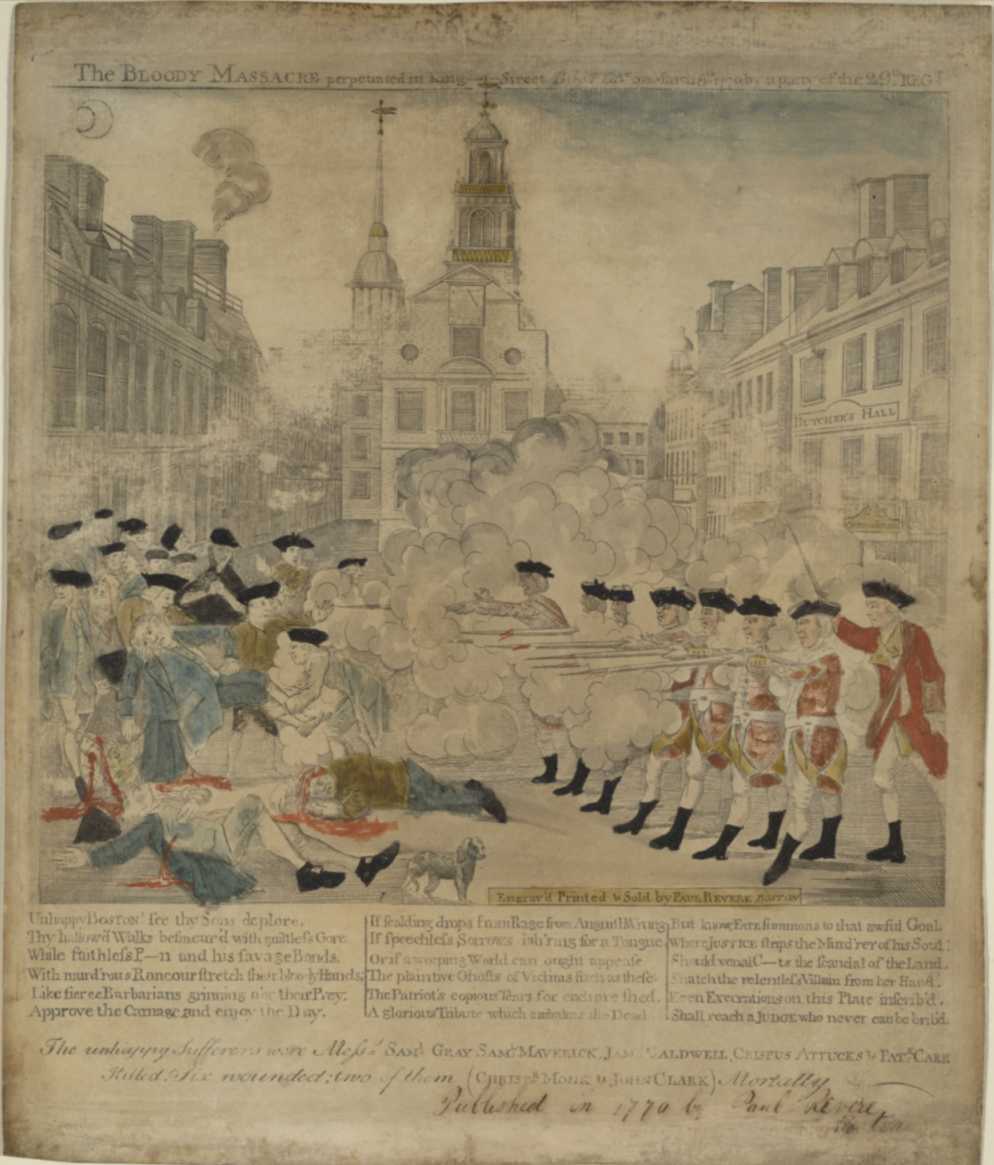
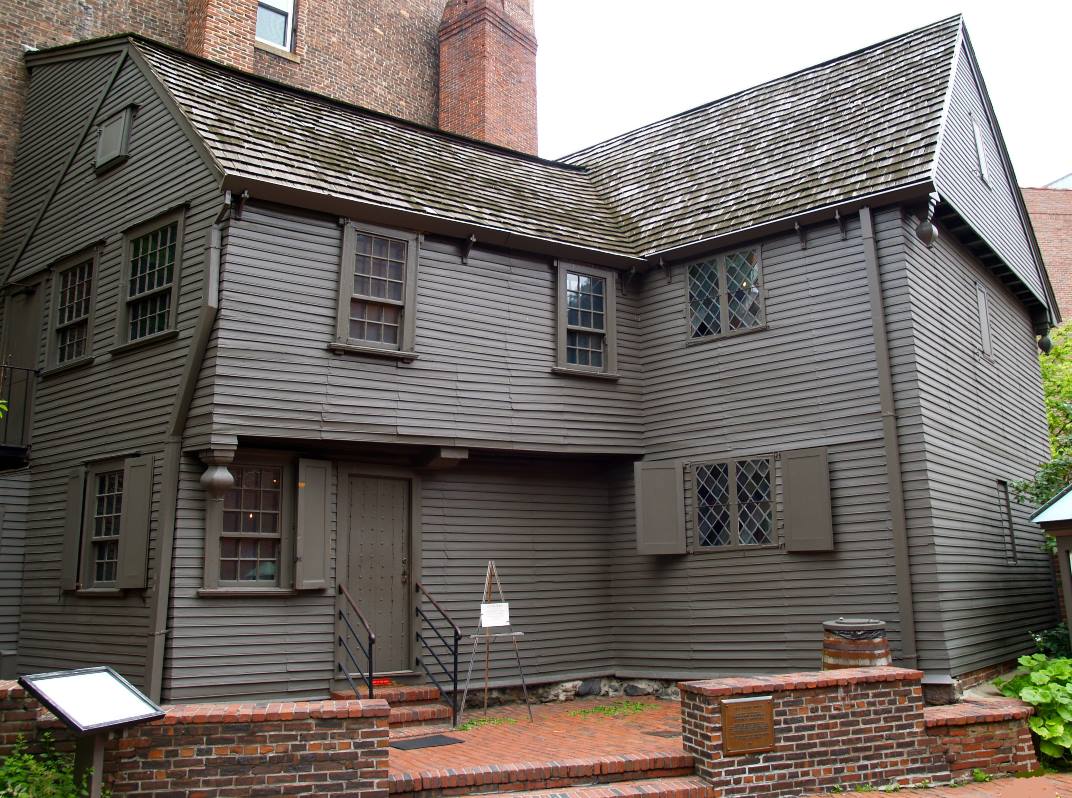
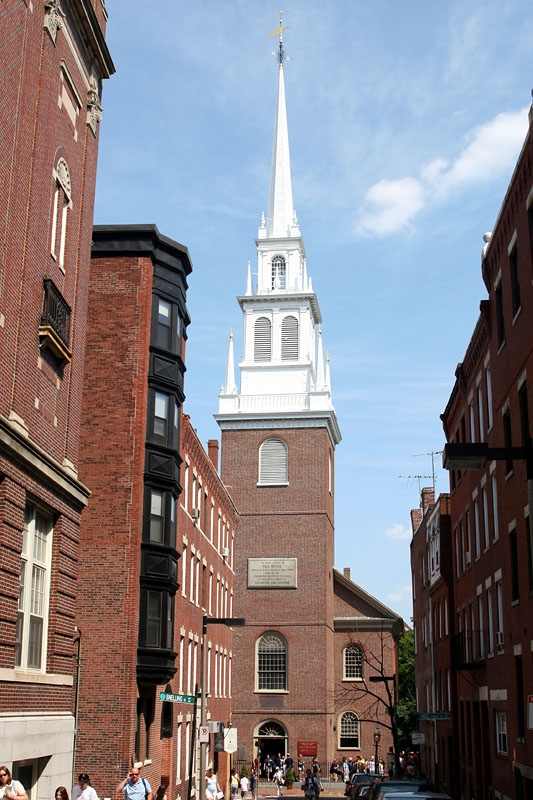
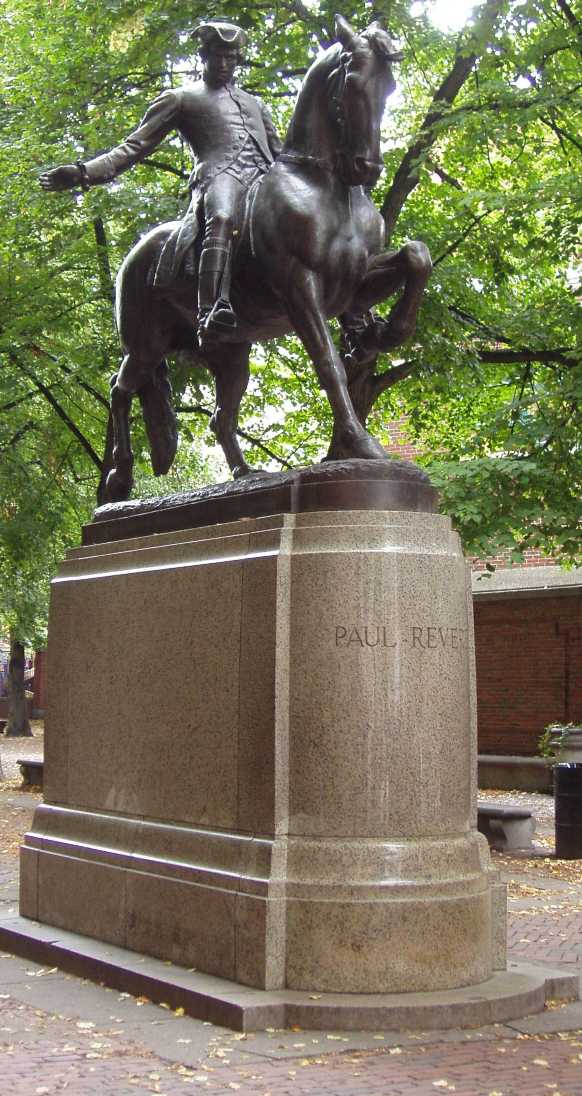
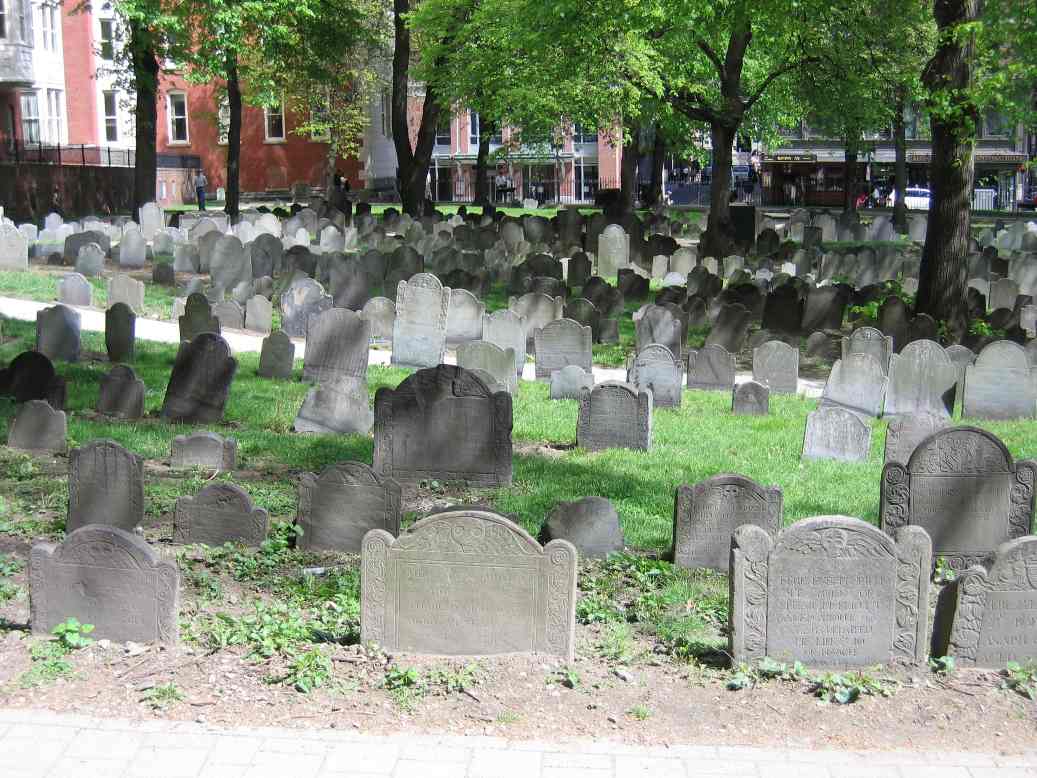
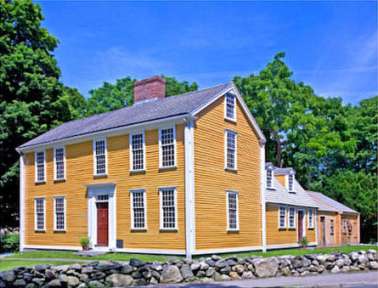
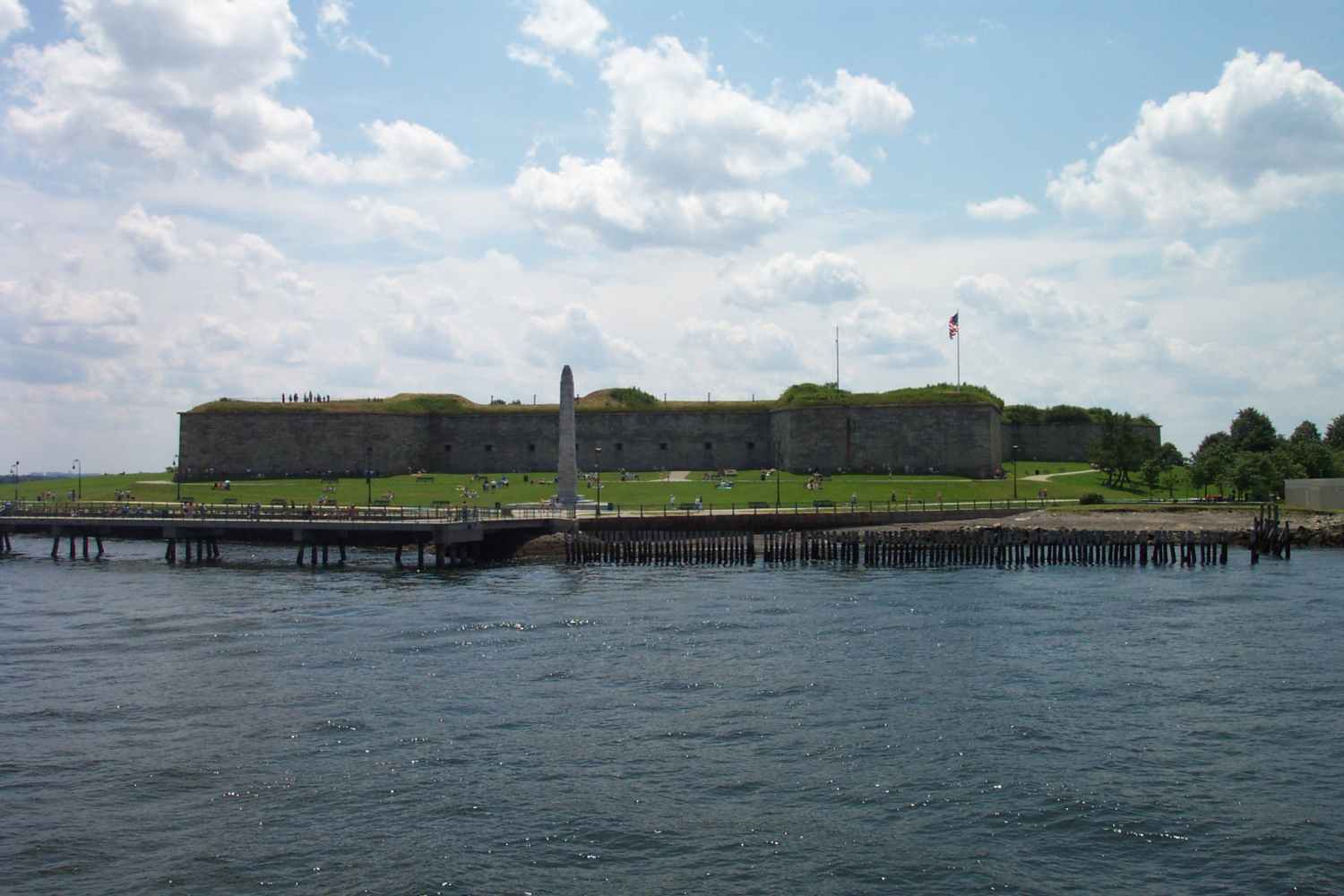
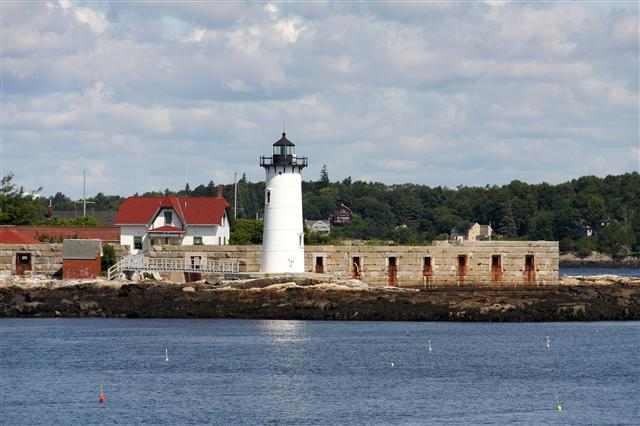
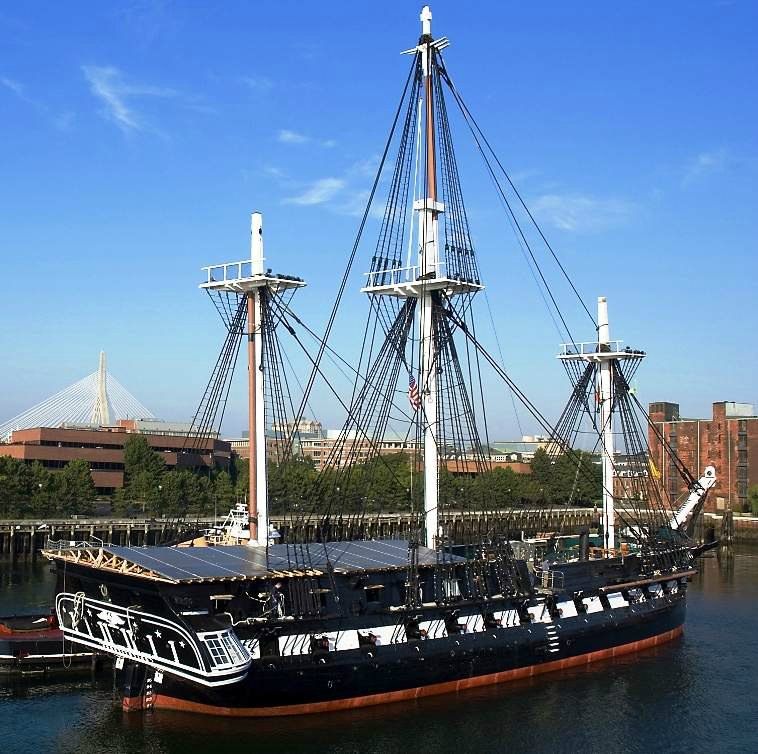









Facebook Comments